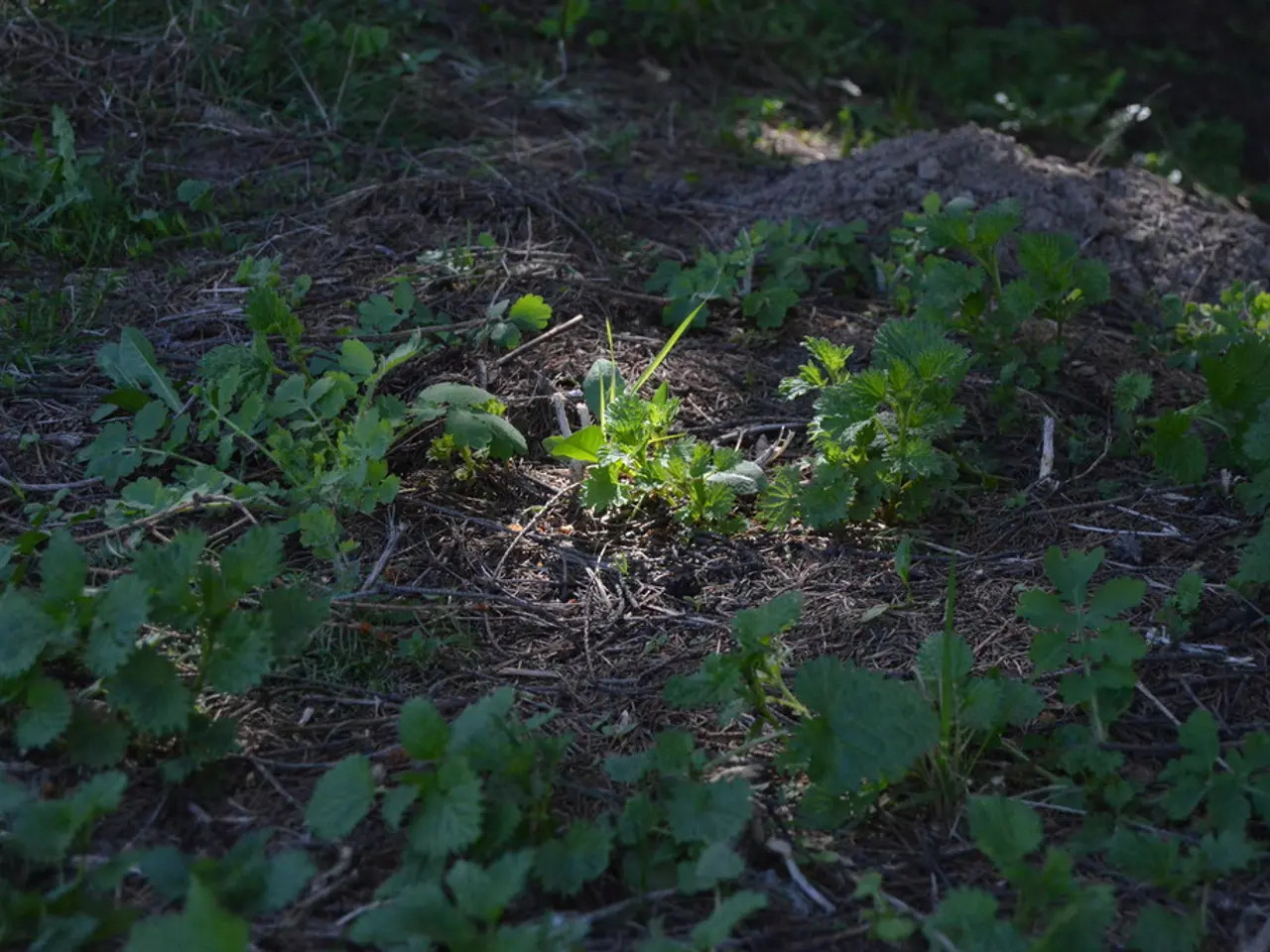Creating the Perfect Balance: Discovering the Best Combination of Green and Brown Elements for Garden Compost Production
In the world of composting, striking the right balance between green and brown materials is key to creating a healthy and productive compost pile. A general guideline suggests a ratio of 1 part green materials to 3 parts brown materials (1:3) by volume, though this can vary slightly between sources.
Green materials, rich in nitrogen, include fruit scraps, grass clippings, and coffee grounds. Brown materials, rich in carbon, consist of dry leaves, cardboard, straw, and paper. By combining these elements effectively, you can maintain the essential carbon to nitrogen balance crucial for effective decomposition and odour control.
To achieve this balance, it's recommended to add browns whenever you add greens. For every bucket of kitchen scraps or fresh grass clippings, add about three buckets of dry leaves, shredded paper, or straw.
Maintaining the moisture level is also essential. A well-composted pile should be damp like a wrung-out sponge, neither too wet nor too dry. Regular aeration is also necessary to provide oxygen, promoting microbial growth and reducing odours.
Monitoring and adjusting your compost pile is also important. If it starts to smell ammonia-like or becomes slimy, add more browns; if decomposition is slow, add more greens for nitrogen.
The ideal carbon-to-nitrogen (C:N) ratio by weight is approximately 30:1. This balance provides the necessary nutrients for the microorganisms responsible for composting efficiently.
Livestock bedding, such as hay, straw, and wood shavings, can also be composted, with the former serving as nitrogen layers and the latter as carbon layers. However, too much carbon can slow decomposition and lead to the production of methane gas, causing an unpleasant odour.
If your compost pile is inert and dry, adding water or wet nitrogen-rich materials like grass clippings or kitchen scraps can help moisten the pile and improve airflow. Electric composting, such as using the Reencle Home Composter, can significantly reduce the time it takes to create compost and nurture microbes.
Maintaining the correct carbon to nitrogen ratio in the compost pile is important for the growth and function of beneficial bacteria, which aid in plant growth. Turning the compost pile at least once a week is recommended to encourage decomposition and aeration.
Some brown compost materials include shredded newspaper, cardboard, brown bags, matte paper products, untreated wood chips, dry leaves, stems, twigs, hay, straw, pine needles, sawdust from non-treated wood, palm fronds, and corn cobs. Some people store carbon-rich materials separately until they have nitrogen-rich materials to ensure the correct ratio in their compost pile, which requires extra space and time.
Chopping up larger pieces of organic material in the compost pile can help speed up the decomposition process. "Greens" in composting refer to nitrogen-rich organic materials, examples including food scraps, grass clippings, recently pulled weeds, and coffee grounds.
To-go paper or cardboard food packaging, without glossy coatings, is typically a brown or carbon layer in the compost pile, but if it is heavily food-covered, it may be a green layer. The ideal compost green to brown ratio is 3:1 (carbon to nitrogen). This balance facilitates rapid decomposition and provides the correct nutrients for microbes.
However, it's important to note that while maintaining the ideal ratio can speed up the decomposition process and produce better quality compost, it's not necessary to have the exact ratio to create compost. If your compost pile has an unpleasant odour or is not breaking down, adjusting the moisture content, turning the pile, and adding additional nitrogen or carbon can help resolve the issue.
Home-and-garden enthusiasts can enhance their gardening by maintaining a balanced compost pile, which involves combining green materials rich in nitrogen, such as fruit scraps, grass clippings, and coffee grounds, with brown materials rich in carbon, including dry leaves, cardboard, straw, and paper. To achieve and sustain this balance, it's recommended to add browns whenever greens are added, adhering to a ratio of about three buckets of browns for every bucket of greens.



